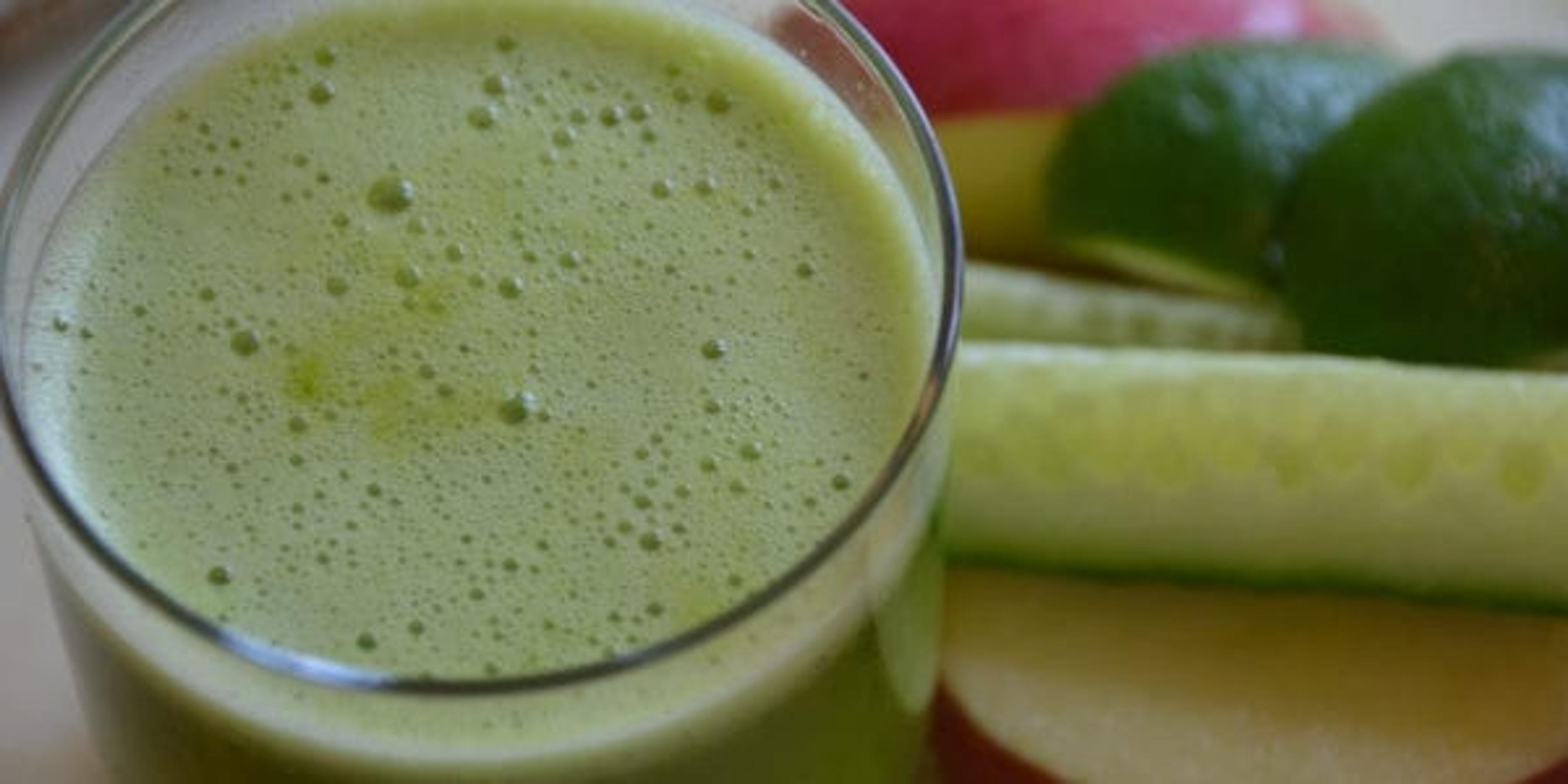Expert Juicing and Smoothie-Making Tips from Malamiah Juice Bar

Julie Bitely
| 3 min read

How many fruits and vegetables do you eat in a day?
If you’re like many Americans, the number is dismal. Michiganders report that they consume about one serving of fruit and one and a half servings of vegetables on average per day. Depending on your age and lifestyle, five to nine servings or more is recommended.
For Anissa and Jermale Eddie, helping people get more antioxidant-rich produce into their diets is their job and passion. Owners of Malamiah Juice Bar at the Downtown Market in Grand Rapids, the couple started juicing themselves after watching the documentary “Fat, Sick, and Nearly Dead.”
Inspired by the documentary star’s lifestyle change after following a juice fast, the Eddie family bought a juicer and one year later, opened their shop in September 2013. Their bustling business pours up smoothies and juices for customers at the market. They’ve done so well that they’re looking to open a second location by the end of this year.
Anissa Eddie said both smoothies and juices are great ways to get fast, healthy nutrition, but she said they can serve very different functions. Smoothies can substitute for a meal if you’re on the run, providing enough calories and protein to fill you up. Juice, on the other hand, should be used as more of a dietary supplement – providing super-concentrated doses of a wide variety of fruits and vegetables all in one shot.
One serving of juice might be loaded with full servings of many different types of veggies and fruits, something most people won’t consume in a day.
“With juice, you get a ton of benefit without having to eat so much,” she explained.
For people who consider French fries a vegetable and like their salads doused in ranch dressing, juicing might be something to consider. Anissa Eddie explained that her boys, Malachi and Nehemiah, have actually grown a more sophisticated palate since the family starting juicing, even gulping down some of the more savory offerings with beets and kale. The green color doesn’t even phase them, and they’ll often ask for their “Hulk” juice.
“It’s just a great boost to get those things you need in your system,” she said.
Here are her tips for beginners looking to incorporate the nutrition of smoothies and juices into their daily routine.
For smoothies:
- Bananas make an excellent base ingredient, lending natural sweetness and a filling, creamy texture, not to mention potassium.
- Spinach is a mild way to sneak greens into a smoothie for kids or adults who don’t love vegetables.
- Add flaxseed, chia seeds, or a plant-based protein powder to smoothies to give them more staying power as an on-the-go breakfast or meal replacement option.
For juices:
- Buy a high-quality juicer if you’re really serious about juicing.
- Drink the juice you make right away to get the full health benefits. Anissa Eddie compares what happens to older juice as similar to the way an apple turns brown. If you make too much, store it in an air-tight container, such as a mason jar, but try to consume it soon after you make it.
- Don’t just gulp your juice down. Swish it in your mouth and then swallow it. The enzymes in your saliva help activate nutritional benefits.
- Aim for an 80/20 ratio of vegetables to fruits in your concoction. While fruits contain natural sugar, it’s still important that you not get too much, even from your own homemade juice.
If you enjoyed this post, you might also like:
Photo credit: bertholf





